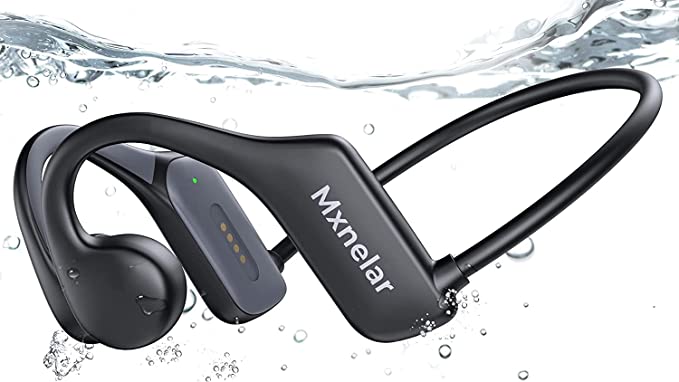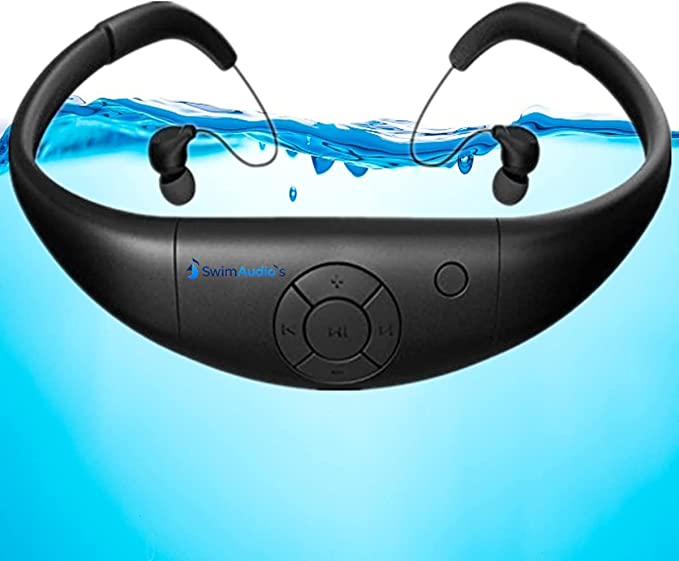The Physics of Submerged Sound: Bone Conduction in the Shokz OpenSwim
Update on Nov. 24, 2025, 9:16 a.m.
Water is a formidable barrier to technology. It crushes with pressure, corrodes with chemistry, and—most critically for audio—it swallows radio waves. For the swimmer, this creates a unique isolation. The runner has their playlist; the cyclist has their podcast; but the swimmer has only the rhythmic rush of water and the black line on the bottom of the pool.
Breaking this silence requires a complete rethinking of how audio is delivered. Traditional loudspeakers (air conduction) fail because the impedance mismatch between air and water muffles the sound. Bluetooth fails because water absorbs the 2.4GHz signal almost instantly.
The Shokz OpenSwim S700 is not just a pair of headphones; it is a solution engineered around the specific physics of the aquatic environment. By abandoning air transmission for Bone Conduction and wireless streaming for Local Storage, it solves the two fundamental problems of submerged audio.

The RF Barrier: Why “No Bluetooth” is a Feature
In consumer reviews, the lack of Bluetooth is often cited as a flaw. In physics, it is a necessity. * Attenuation: The 2.4GHz frequency used by Bluetooth resonates with water molecules. When a signal attempts to pass through water, its energy is absorbed as heat within centimeters.
[Image of constructive and destructive interference waves diagram]
(Note: While this tag shows interference, imagine it representing signal decay/attenuation).
* The Faraday Effect: Effectively, a swimming pool acts like a massive shield against high-frequency radio waves.
Therefore, the OpenSwim must be an MP3 player. By integrating 4GB of storage directly into the headset, it removes the need for a wireless handshake that physics renders impossible. It acknowledges that to listen underwater, you must carry your data with you.
Hydro-Acoustics: Why Bone Beats Air
Sound travels 4.3 times faster in water than in air, but it is harder to get it into your ear. * Air Conduction Problem: Traditional earbuds rely on moving air. Underwater, the water pressure seals the ear canal or the earbud creates a pocket of air that compresses, dampening the driver’s movement and muffling high frequencies. * Bone Conduction Solution: The OpenSwim bypasses the ear canal entirely. The transducers rest on the zygomatic arch (cheekbone). The Water Coupler: Remarkably, water aids this process. Because water has a density closer to bone than air does, it acts as a Coupling Medium*. It helps transfer vibrations from the device to the skull with less energy loss than in open air.
This is why the OpenSwim often sounds better underwater than on land. The environment that destroys air conduction actually enhances bone conduction.

The Occlusion Effect: The Role of Earplugs
Shokz includes earplugs with the OpenSwim. This is not just to keep water out; it is a key component of the EQ strategy. * Physics: When you plug your ears, you trap the low-frequency vibrations resonating inside your skull. This is the Occlusion Effect. * Result: It acts as a mechanical bass boost. The OpenSwim features a dedicated “Swimming Mode” EQ that adjusts the frequency curve to account for this boost, ensuring the audio remains balanced and clear rather than muddy and booming.
Hydrodynamics and Ergonomics
A swimmer is a vessel moving through a fluid. Anything attached to the head creates Drag.
The OpenSwim utilizes a wraparound titanium frame that fits under a swim cap.
* Profile: The transducers are streamlined to minimize turbulence.
* Stability: Unlike earbuds that rely on friction inside a wet ear canal (a recipe for slipping), the OpenSwim clamps gently to the temporal bone. This mechanical stability ensures the sound source remains coupled to the skull even during the violent turbulence of a flip turn.

Conclusion: Engineering for the Element
The Shokz OpenSwim is a device defined by its environment. Every “limitation”—the lack of Bluetooth, the proprietary charging cradle (for IP68 sealing), the buttons instead of touch screens—is a direct response to the laws of hydrodynamics and electromagnetism.
It serves as a reminder that in extreme environments, convenience must bow to physics. For the swimmer, it offers the only reliable way to bring the rhythm of the land into the silence of the water.































